
Simon the Sorcerer is a 1993 point-and-click adventure game developed and published by Adventure Soft, for Amiga and MS-DOS. The game's story focuses on a boy named Simon who is transported into a parallel universe of magic and monsters, where he embarks on a mission to become a wizard and rescue another from an evil sorcerer. The game's setting was inspired by the novels of the Discworld series, and incorporates parodies on fantasy novels and fairy tales, such as The Lord of the Rings and Jack and the Beanstalk. The lead character's design was inspired by that of the fictional British television character Blackadder, with the character voiced by Chris Barrie in the CD re-release.
Traveller is a science fiction role-playing game first published in 1977 by Game Designers' Workshop. Marc Miller designed Traveller with help from Frank Chadwick, John Harshman, and Loren Wiseman. Editions were published for GURPS, d20, and other role-playing game systems. From its origin and in the currently published systems, the game relied upon six-sided dice for random elements. Traveller has been featured in a few novels and at least two video games.
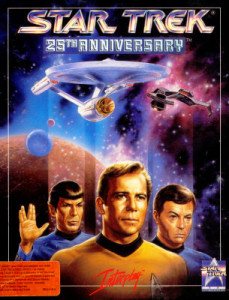
Star Trek: 25th Anniversary is an adventure video game developed and published by Interplay Productions in 1992, based on the Star Trek universe. The game chronicles various missions of James T. Kirk and his crew of the USS Enterprise. Its 1993 sequel, Star Trek: Judgment Rites, continues and concludes this two-game series.
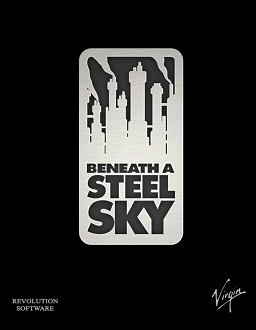
Beneath a Steel Sky is a 1994 point-and-click adventure game developed by British developer Revolution Software and published by Virgin Interactive Entertainment for MS-DOS and Amiga home computers. It was made available as freeware – and with the source code released – for PC platforms in 2003. Set in a dystopian cyberpunk future, the player assumes the role of Robert Foster, who was stranded in a wasteland known as "the Gap" as a child and adopted by a group of local Aboriginals, gradually adjusting to his life in the wilderness. After many years, armed security officers arrive, killing the locals and taking Robert back to Union City. He escapes and soon uncovers the corruption which lies at the heart of society.

Discworld II: Missing Presumed...!? is a 1996 point-and-click adventure game based on Terry Pratchett's series of fantasy novels set on the mythical Discworld, and sequel to the 1995 video game of the same name. The story sees players assume the role of Rincewind the "wizzard" as he becomes burdened with the task of finding Death and coercing him out of an impromptu retirement and back into his regular duties. The game's plot borrows from a number of Discworld books, including key elements from Reaper Man and Moving Pictures.
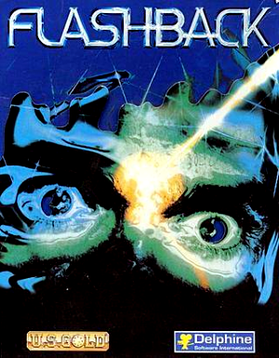
Flashback, released as Flashback: The Quest for Identity in the United States, is a 1992 science fiction cinematic platform game developed by Delphine Software of France and published by U.S. Gold in the United States and Europe, and Sunsoft in Japan.

It Came from the Desert is a 1989 action-adventure game by Cinemaware. It was originally released for the Amiga, but later ported to MS-DOS, as well as released in distinctly different forms to consoles. The TurboGrafx-16 release is distinctly different from the computer versions, in terms of gameplay and presentation. An expansion set Antheads: It Came from the Desert II was released in 1990.

Simon the Sorcerer II: The Lion, the Wizard and the Wardrobe is an adventure game created by Adventure Soft, and released in 1995 for the MS-DOS. It is the second installment in the Simon the Sorcerer series of games, and the sequel to 1993's Simon the Sorcerer. The game's story focuses on a young teen named Simon, who is transported into a parallel universe of magic and monsters that he visited before, via a magical wardrobe created by an evil sorcerer he defeated in the last game. Players engage in a quest to help him find more fuel for the wardrobe by searching a vast world, consisting of parodies on popular fantasy novels and fairy tales.

King's Quest VI: Heir Today, Gone Tomorrow is a point-and-click adventure game, first released in 1992 as the sixth installment in the King's Quest series produced by Sierra On-Line. Written by Roberta Williams and Jane Jensen, King's Quest VI is widely recognized as the high point in the series for its landmark 3D graphic introduction movie and professional voice acting. King's Quest VI was programmed in Sierra's Creative Interpreter and was the last King's Quest game to be released on floppy disk. A CD-ROM version of the game was released in 1993, including more character voices, a slightly different opening movie and more detailed artwork and animation.

Putty is a game developed by System 3 and released in 1992 for the Amiga. It was also released on the Super Nintendo Entertainment System in 1993 as Super Putty and Amiga CD32 version was published in 1994 under the same name.

Plan 9 from Outer Space is a point and click adventure game adaptation of the film of the same name. It was developed at the Irish office of Gremlin Graphics for the Amiga and Atari ST, and was released in 1992. The game was published by Gremlin in Europe and by Konami in the United States. A DOS version was also developed, though only released in the US and Europe. Two editions of the game were made available at retail; the more common version was packaged with a VHS copy of the film, while a rarer version contained only the game.

Obitus is an action-adventure game developed and released by Psygnosis in early 1991 for Amiga, Atari ST and DOS. It was also ported to the Super Nintendo Entertainment System by Bullet-Proof Software. The game features both first-person dungeon crawling and side-scrolling gameplay with action-oriented combat and an emphasis on item acquisition. It is similar to games like Eye of the Beholder on Super Nintendo but without the RPG mechanics.

D/Generation is an action-adventure game with puzzle elements developed for the 8-bit Apple II during the late 1980s, but instead published and released for MS-DOS, Amiga, and Atari ST by Mindscape in 1991. The game takes place in a slightly cyberpunk futuristic setting in 2021.

Universe is a graphic adventure game developed and published by Core Design for the Amiga, Amiga CD32 and DOS platforms in 1994. It was Core Design's second and last effort in the adventure game genre after Curse of Enchantia, of which it was originally planned to be a sequel.
MacVenture is a series of four adventure games with a menu-based point-and-click interface. They were originally developed for the Macintosh by ICOM Simulations:
- Déjà Vu (1985)
- Uninvited (1986)
- Shadowgate (1987)
- Deja Vu II: Lost in Las Vegas (1988)
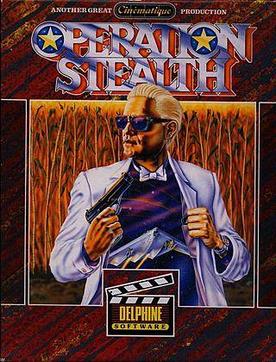
Operation Stealth, also known as James Bond 007: The Stealth Affair in the United States, is an adventure game from Delphine Software International, released in 1990. The game is mainly the work of Paul Cuisset (programming) and Jean Baudlot (sound).

Space Quest IV: Roger Wilco and the Time Rippers is a 1991 graphic adventure game by Sierra On-Line, and the fourth entry in the Space Quest series. The game was released originally on floppy disks on March 4, 1991, and later released on CD-ROM in December 1992 with full speech support; an Atari ST version was announced via Sierra Online's magazine, Sierra News Magazine, but was later canceled. The game sees players assume the role of Roger Wilco, who is thrust into a new adventure across time and space where he must thwart the plans of an old foe that is seeking revenge against him.

Nightlong: Union City Conspiracy is a cyberpunk-themed adventure game developed by Trecision and Team17 and published by MicroProse in Europe and DreamCatcher Interactive in North America. It was later ported to the Amiga by ClickBOOM.
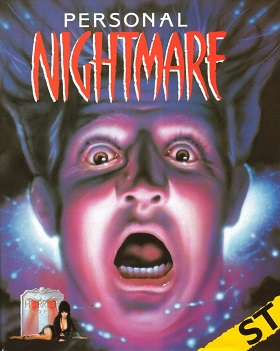
Personal Nightmare is a horror adventure game developed and published by Horror Soft for the Amiga, Atari ST and MS-DOS in 1989. It was released digitally by Adventure Soft on July 2, 2009 on GOG.com.
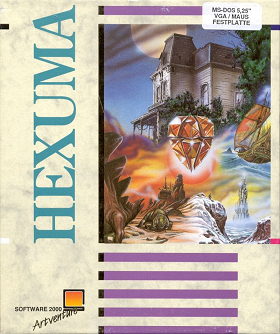
Hexuma, alternatively titled Hexuma: Das Auge des Kal is a German text adventure game published in 1992 by Software 2000 and developed by Weltenschmiede, and released for Amiga and DOS. Hexuma is the last entry in a text adventure trilogy; it is preceded by Das Stundenglas (1990) and Die Kathedrale (1991). The trilogy lacks an overarching plot, and in each entry the setting, role of the protagonist, and goal differ between each game. Games in the trilogy do not require knowledge of the other entries and may be played as standalone games.


















